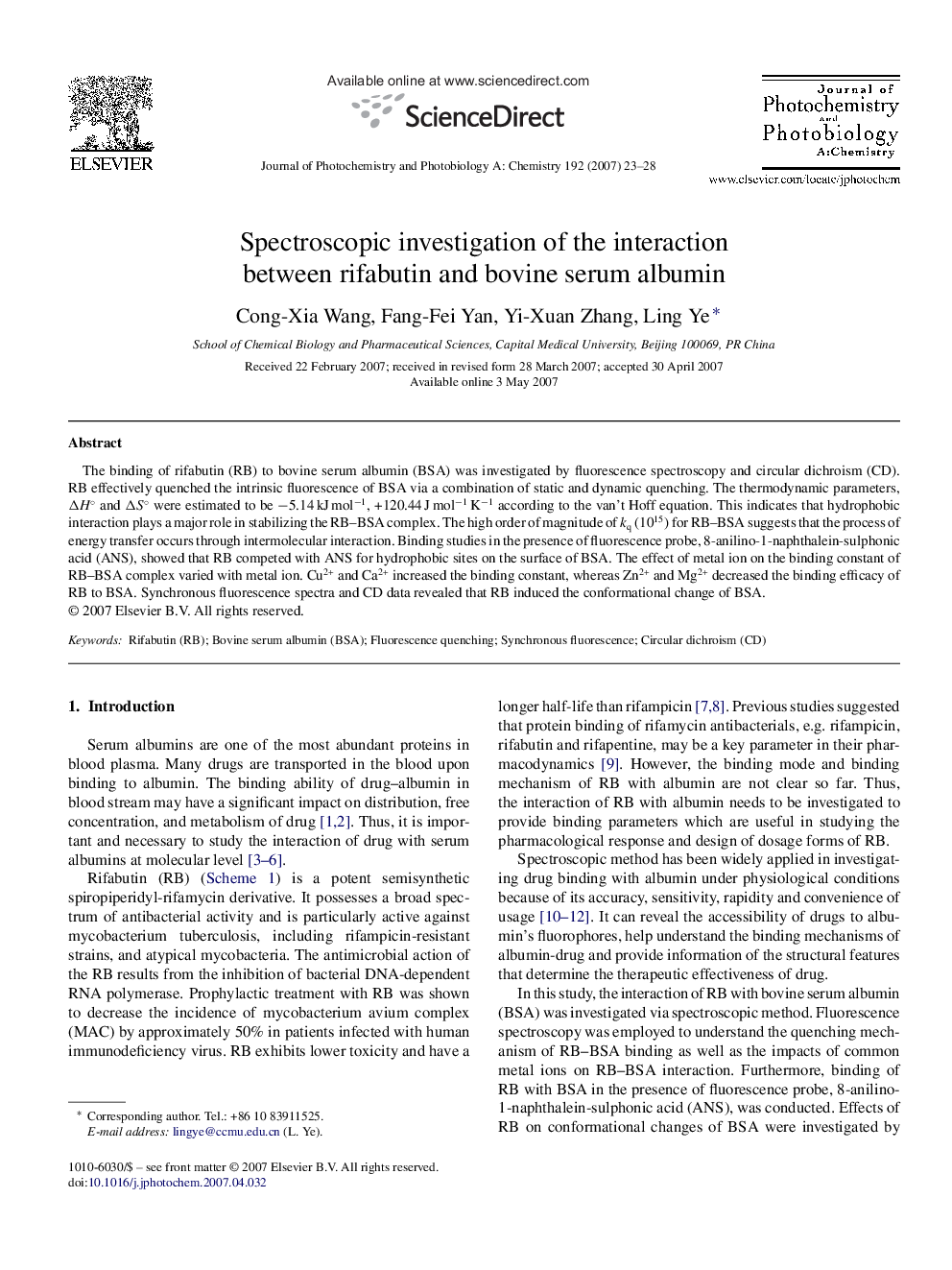| Article ID | Journal | Published Year | Pages | File Type |
|---|---|---|---|---|
| 27954 | Journal of Photochemistry and Photobiology A: Chemistry | 2007 | 6 Pages |
The binding of rifabutin (RB) to bovine serum albumin (BSA) was investigated by fluorescence spectroscopy and circular dichroism (CD). RB effectively quenched the intrinsic fluorescence of BSA via a combination of static and dynamic quenching. The thermodynamic parameters, ΔH° and ΔS° were estimated to be −5.14 kJ mol−1, +120.44 J mol−1 K−1 according to the van’t Hoff equation. This indicates that hydrophobic interaction plays a major role in stabilizing the RB–BSA complex. The high order of magnitude of kq (1015) for RB–BSA suggests that the process of energy transfer occurs through intermolecular interaction. Binding studies in the presence of fluorescence probe, 8-anilino-1-naphthalein-sulphonic acid (ANS), showed that RB competed with ANS for hydrophobic sites on the surface of BSA. The effect of metal ion on the binding constant of RB–BSA complex varied with metal ion. Cu2+ and Ca2+ increased the binding constant, whereas Zn2+ and Mg2+ decreased the binding efficacy of RB to BSA. Synchronous fluorescence spectra and CD data revealed that RB induced the conformational change of BSA.
